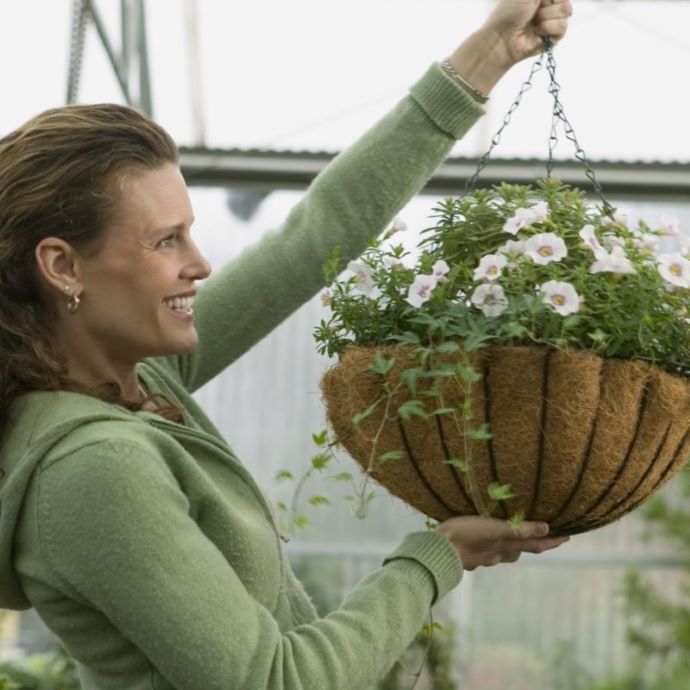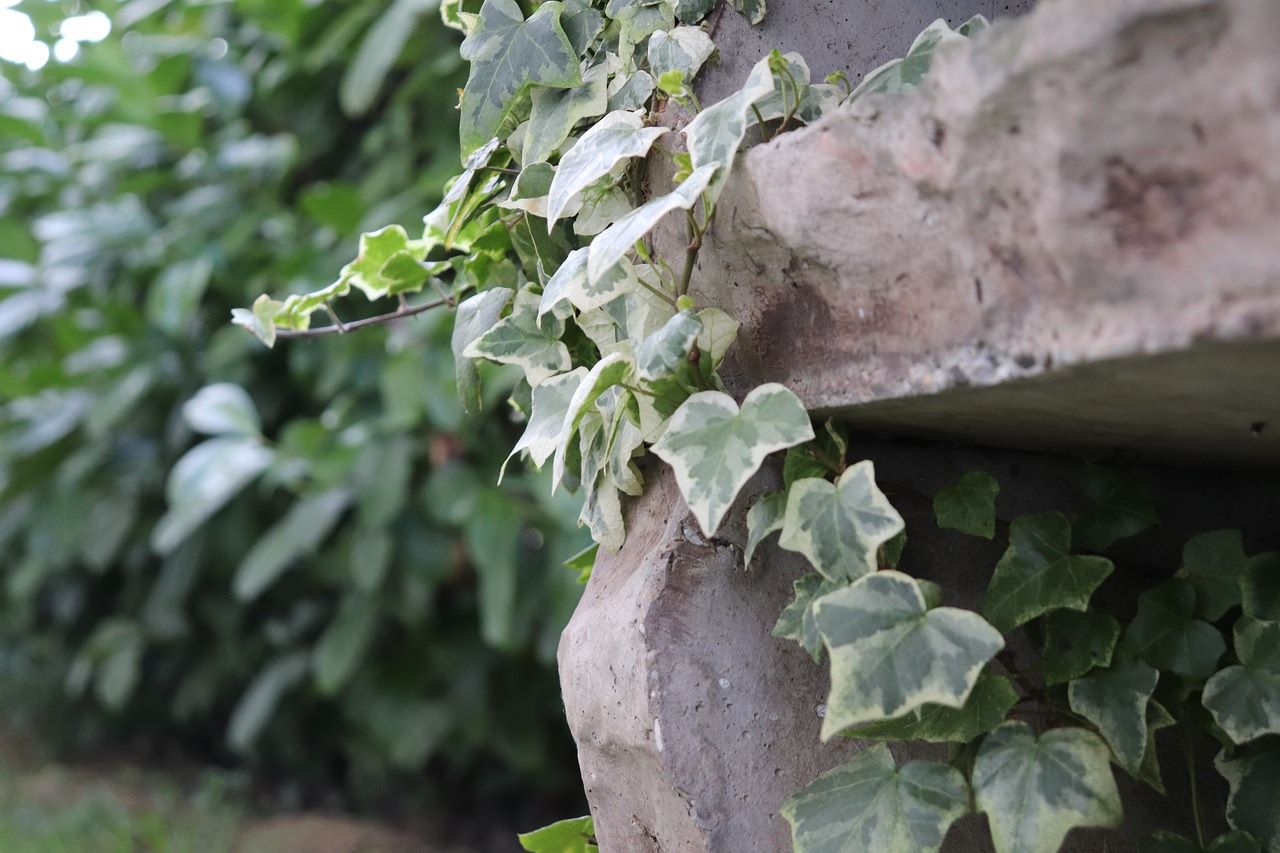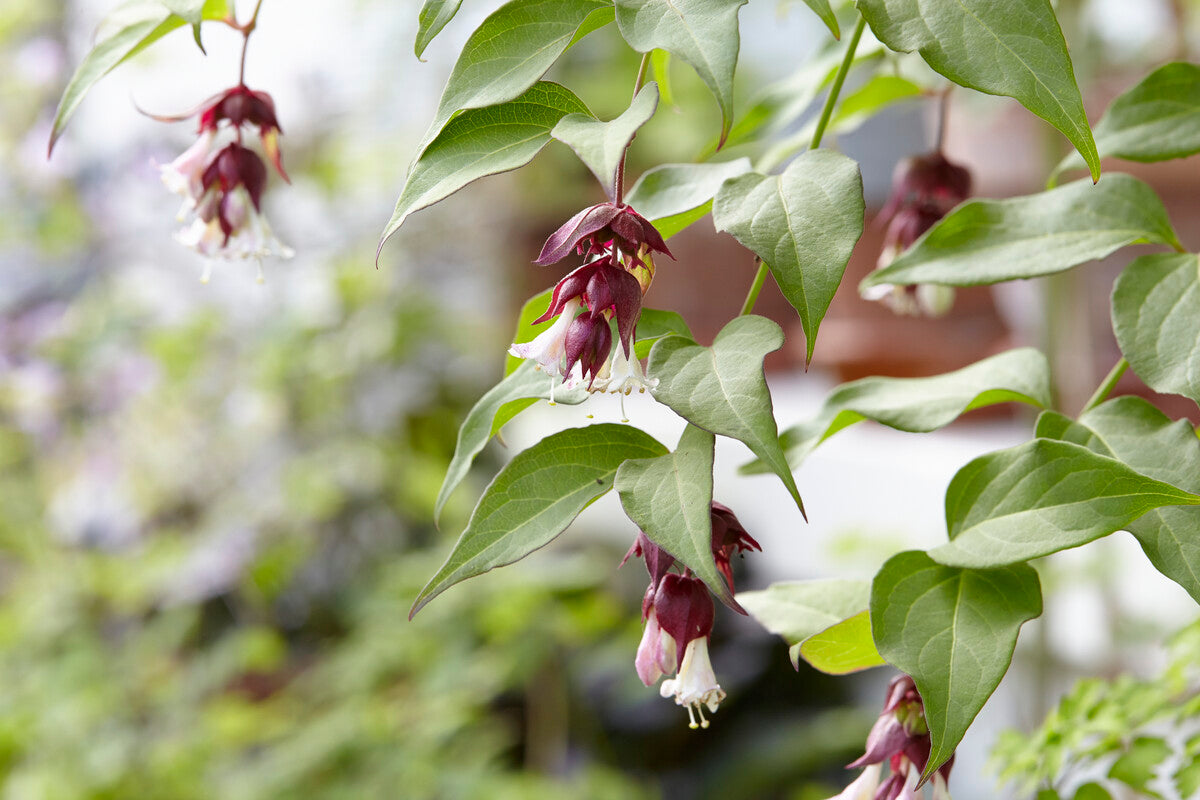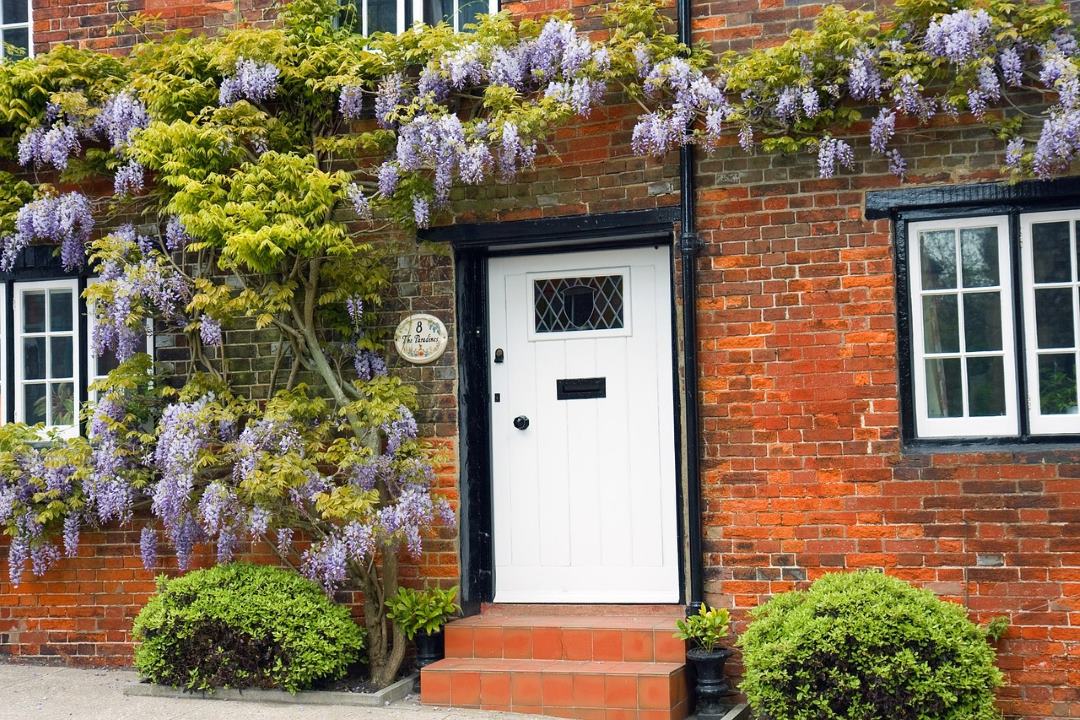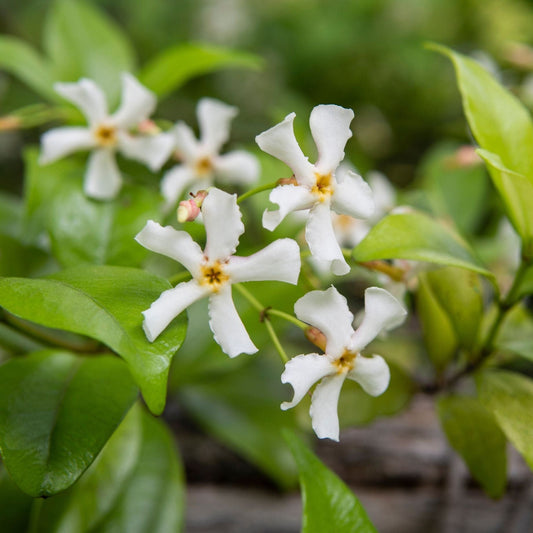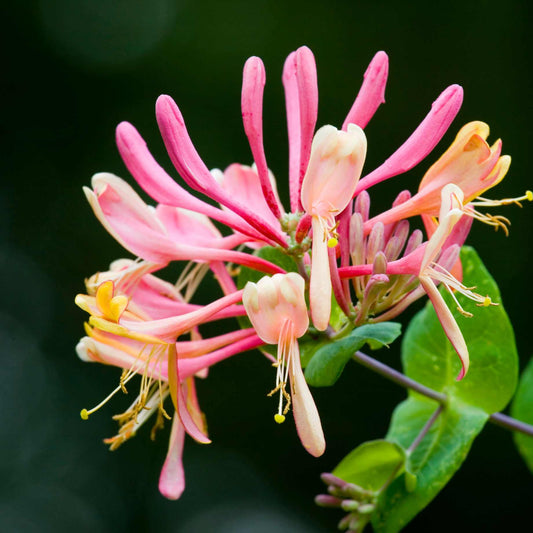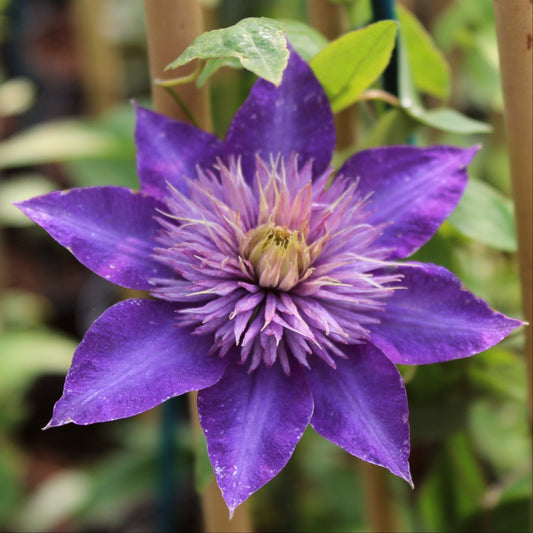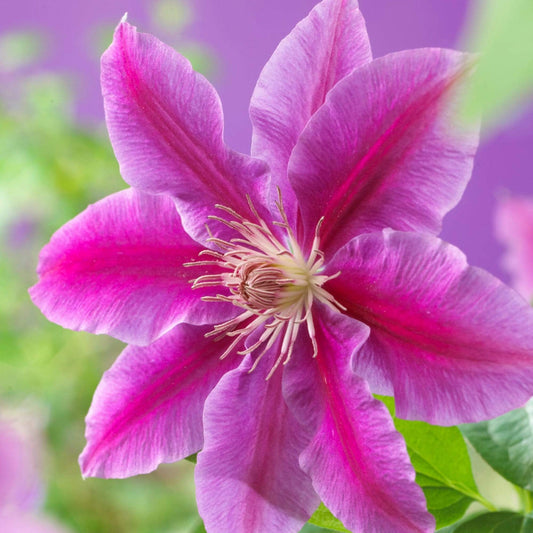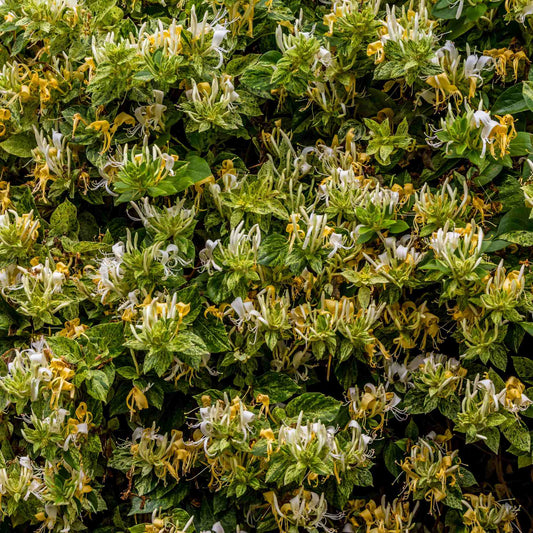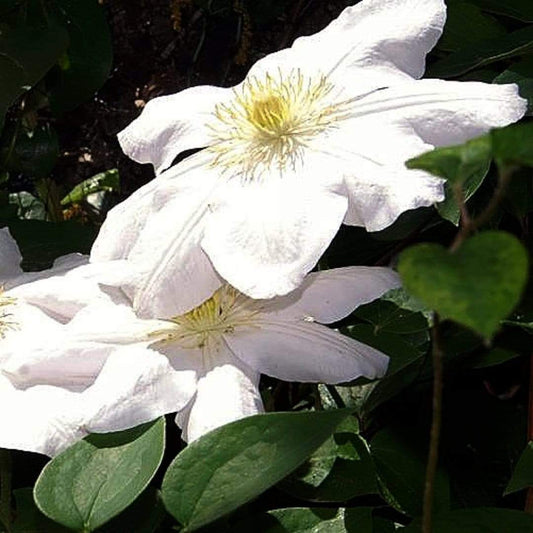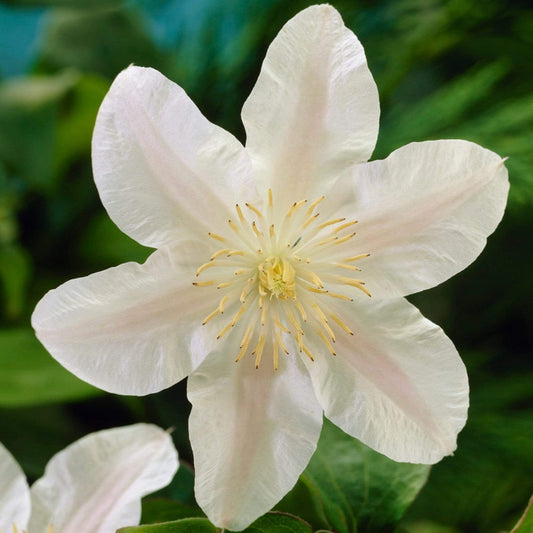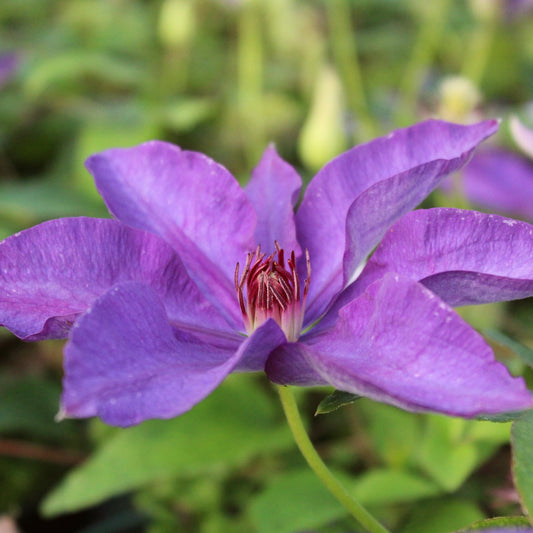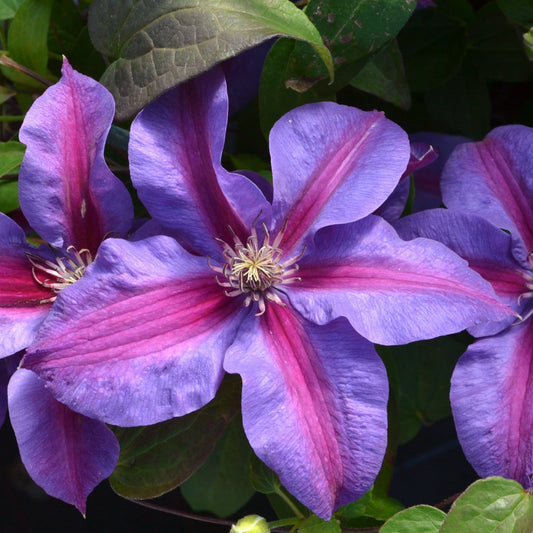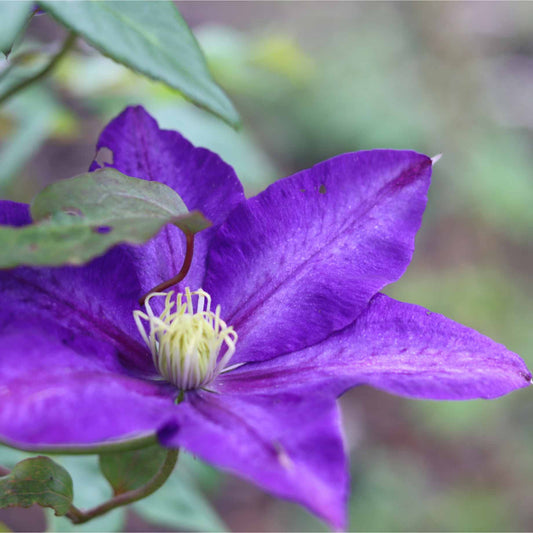Pruning Climbers: A Grower’s Guide
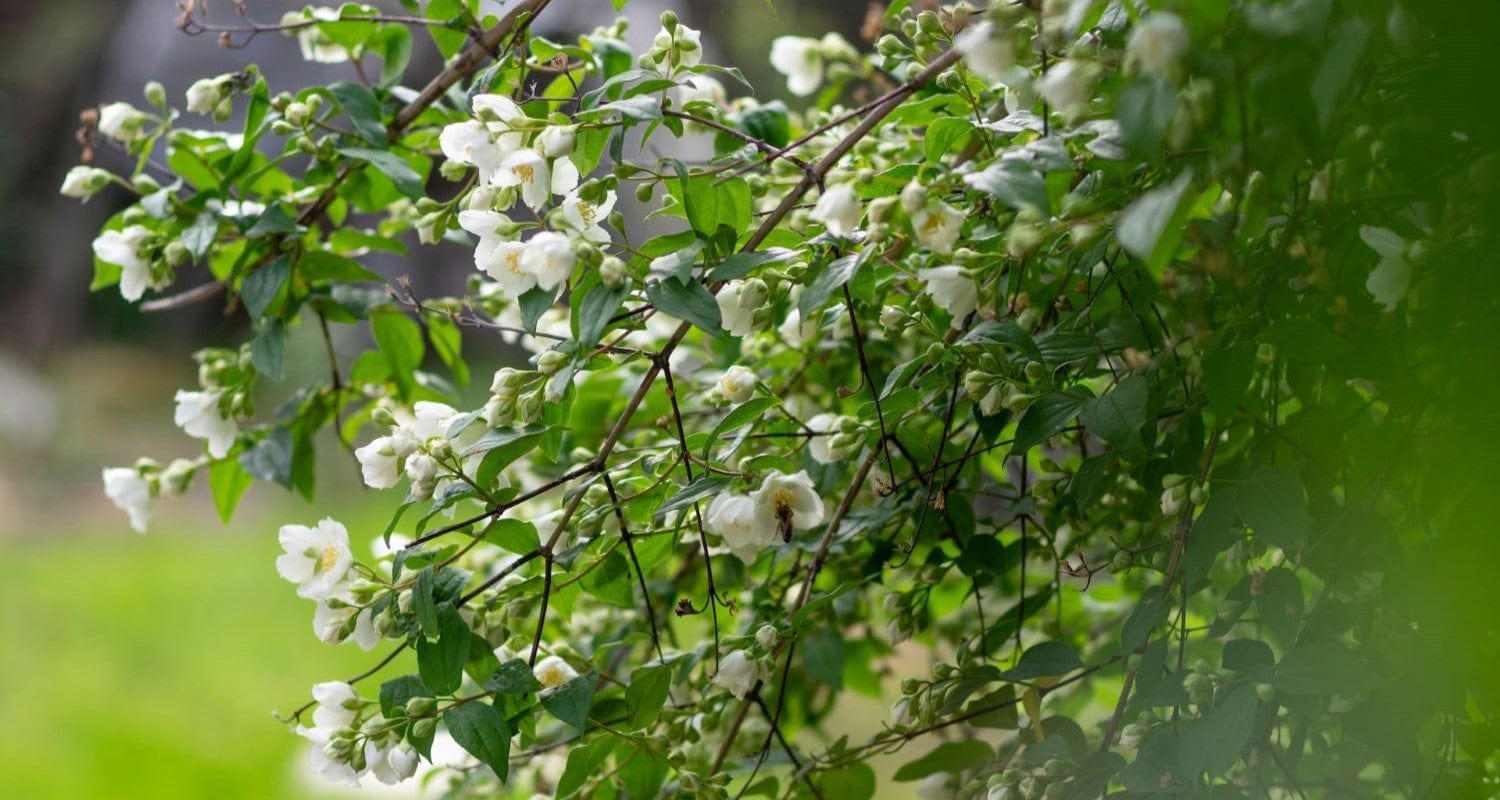
Pruning your climbing plants might not be the most exciting hobby (although it has its moments) but in most cases it makes a big difference to the health and strength of your plants, so it’s well worth taking the time to do it well. Find out the best time to prune your climber and how, and you’ll be rewarded with better flowers, fewer problems with diseases and well shaped plants that grow in the direction you want them to! We asked our climbing plant grower, Mollie, for her expert advice on pruning climbers to get you set for success.
Whatever variety of climber you have, make sure your pruners or shears are sharp and clean so that your pruning cuts are neat and straight, preventing infections getting into the plant and helping it to heal more quickly.
Jump to:
- Pruning ivy
- Pruning jasmine
- Pruning honeysuckle
- Pruning wisteria
- Pruning clematis
- Pruning climbing and rambling roses
- Pruning passion flowers
How to prune ivy (or not)
Ivy doesn’t need to be pruned for health, but as it’s a pretty vigorous plant, you will probably want to prune it to fit your space at some point. You can prune back an overgrown English ivy (hedera) at any time of year, but early spring is best, before the new growth really kicks in. It’s best to wear gardening gloves to prune ivy, as some kinds can irritate your skin.
How to prune jasmine
Some jasmines flower in summer and some in winter - both types should be pruned after they’ve finished blooming, to avoid damaging any flower buds. Firstly, prune out any dead, diseased or damaged stems, any that are tangled and any old stems that don’t flower any more. If you do find a large tangle of branches, prune out small pieces of stems gradually rather than pulling it or risking cutting a main stem.
Next, trim out any long, straggling shoots that are growing away from the support and can’t be neatly tied in. Finally, you can shorten the stems to the nearest strong side shoot to keep your plant well shaped and within its framework.
How to prune honeysuckle
Prune your summer flowering honeysuckles (most of them) in spring. They’ll only need a light trim to keep them in shape - too much pruning will reduce the following year’s flowering. Firstly, cut out any weak or damaged shoots and thin out the stems if they’ve become tangled, then cut back any long, straggling shoots that have grown away from the support.
For winter flowering honeysuckles, the time to prune is after they’ve finished flowering in late summer. Trim the shoots that have flowered by about a third and cut back the side shoots to about two or three buds from the main stems.
Once they’ve been in place for a few years, both kinds of honeysuckle will benefit from a late winter tidy up. Cut back all the stems to about 60cm to encourage new growth, then choose the strongest stems, spread them out and tie them in to the support to create a less tangled framework - this will allow air to flow through the plant and prevent fungal diseases.
How to prune wisteria
Wisteria can be left unpruned if you have the space to let it do its thing, but for the best flowers, you should prune it twice a year, in late summer and again in winter. Pruning also helps air and sunlight to reach all the parts of the plant, encouraging healthy new growth.
The best time to summer prune a wisteria is in July or August. Your aim here is to control the size of your plant and encourage it to grow new flower buds rather than put its energy into growing larger. The best way to do this is to prune the green shoots that have grown during the current year to a length with five or six leaves.
In January or February, when the plant is dormant, cut back the same stems to two or three buds from the main stem. This will keep it in good shape and make sure the developing flowers can get plenty of light and air without being covered with leaves.
For older wisteria plants, you may also need to cut out old, dead branches and stems, or overgrown branches that are covering windows or getting too heavy for the supports. This can be done at any time of year.
How to prune clematis
All clematis plants fit into one of three pruning groups and it’s really important that you identify which one your clematis is in, so that you can prune it effectively and without harming the plant. Group 1 clematis, such as montana and alpina varieties, need no pruning at all; Group 2, which includes large flowered varieties like Niobe, Piilu and Nelly Moser, should be pruned lightly in February and Group 3 clematis, including smaller flowered viticella varieties, need to be pruned hard in early spring. You can find out which group your clematis belongs to by checking our website, and our growers’ guide to clematis pruning has everything you need to know.
How to prune climbing and rambling roses
Firstly, check whether you have a climbing or rambling rose - the difference is that climbing roses bloom repeatedly throughout summer and into autumn, whereas rambling roses bloom only once (but with more flowers) around June. Climbing roses also tend to grow in one direction only, while ramblers go all over the place.
For climbing roses
In the first year after flowering, prune away any stems that are growing away from the structure and can’t be tied in.
In the second year and beyond, repeat this step and if your rose is getting very vigorous, you can also cut away some of the weaker growth. Prune out old flowering stems to around 15cm from the main stem.
For rambling roses
Prune your rambling roses as soon as the flowers have finished - August to September is best. As they flower on the previous couple of seasons’ growth, you should cut out the oldest stems that have flowered. This avoids your plant turning into a dead looking tangle of old wood like you’ll sometimes see when rambling roses are neglected, and encourages fresh new stems to grow.
For both kinds of rose, you should also prune out all dead, damaged or diseased parts of the plant and remove any remaining leaves each year. Don’t worry if your rose looks a little bare - it will come back stronger and healthier in the spring.
For more advice from our growers, check out our rose pruning guide.
How to prune passiflora
Passiflora (passion flowers) can grow very vigorously, so you’ll need to prune yours to keep it in good shape. This should be done after the plant has finished flowering. Start by trimming off any dead or damaged shoots, then trim the stems that have flowered to fit the available space.
Cutting back to two buds away from the previous year’s growth is a good guideline - any more and you risk the plant not flowering the following year. Aim for a fan-shaped framework and tie the main stems into the support with soft plant ties or twine. If your plant gets damaged by frost, you can often get new shoots to grow by cutting the stems back to around 30cm, above a healthy bud.
Last updated: 13/11/2023






